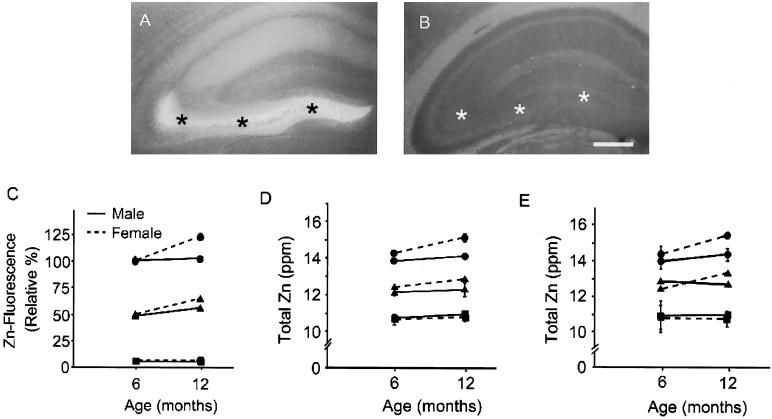Figure 1.
Gender-disparate increases of synaptic zinc in mice with aging. (A and B) Fluorescence photomicrographs of coronal brain sections of non-Tg2576 (hAPP−/−), ZnT3+/+ (A), and ZnT3−/− (B) mice stained with TFL-Zn. Whereas dense zinc fluorescence was seen in the hippocampal mossy fiber area of ZnT3+/+ mice (A, asterisks), virtually no zinc fluorescence was seen in the same area of ZnT3−/− mice (B, asterisks). (Bar = 100 μm.) (C) Data denote TFL-Zn fluorescence (mean ± SEM, n = 6) in the hippocampal mossy fiber area (asterisks in A and B) of hAPP−/− mice with different ZnT3 genotypes. Differences in zinc fluorescence among ZnT3+/+, ZnT3+/−, and ZnT3−/− at 6 and 12 months were all significant (P < 0.001). Differences between male and female were significant only at 12 months in ZnT3+/+ and ZnT3−/− (P < 0.001). (D) Total zinc content (mean ± SEM, n = 3) in brains of non-Tg2576 mice (hAPP−/−) with different ZnT3 genotypes. (E) Total zinc content (mean ± SEM, n = 3) in brains of hAPP+ mice with different ZnT3 genotypes. Circles, triangles, and squares denote ZnT3+/+, ZnT3+/−, and ZnT3−/−, respectively.

